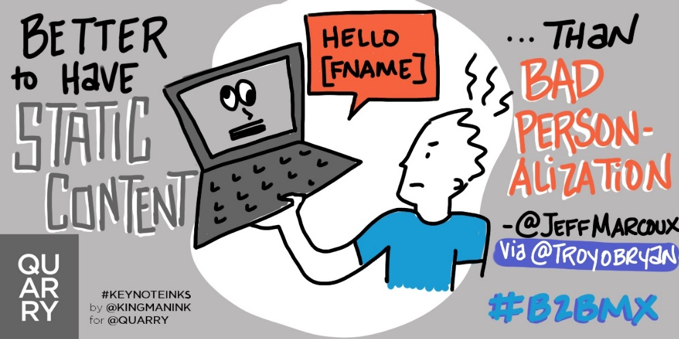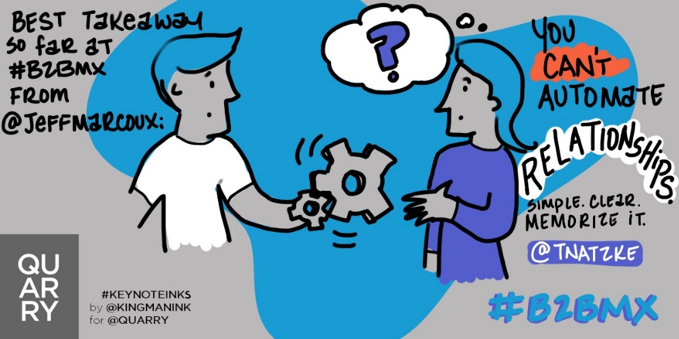As a consumer, when was the last time you thought to yourself, “this is a B2B brand and so I have lower expectations for a personalized experience?” Most likely never. People don’t distinguish between B2C and B2B brands, yet most brands that sell to businesses fail to make an emotional connection with buyers.
This is a missed opportunity.
Just like in the consumer world, customer experience is becoming more important than price, product, or features. The challenge is to cut through complicated, multi-buyer sales processes and connect with clients. Here’s how enterprise marketers and salespeople can do just that.
Emotion matters
It’s unquestionable that consumer brands evoke strong feelings among consumers, but enterprise buyers are arguably even more emotionally connected to their vendors and service providers. Think about it: an individual might be disappointed if a consumer purchase doesn’t live up to expectations, but a B2B purchase decision includes greater risks.
If the purchase decision fails to meet expectations, the key stakeholders may lose time, credibility, or possibly their jobs. With so much at stake, it’s reasonable for people to feel a strong connection to a vendor or service provider.
So, how can enterprise brands begin building that emotional connection with buyers? Personalization is the key to enhancing and differentiating your brand from your competitors. Only in rare instances will a marketing campaign convince someone to buy from the company. What pushes the needle is the aggregation of interactions with the brand including word-of-mouth mentions, face-to-face meetings with marketing and sales representatives, etc.

Contextualize the prospect’s pain points and needs: In addition to researching the prospect’s role in the company, buyer personas are helpful for understanding how to address that person’s general pain points.
Deliver value as early as possible: Look for opportunities to provide helpful information, such as by sharing product information that isn’t available online.
Put yourself in your customer’s shoes: Your brand or product isn’t the hero of the story. Instead, explain how your company or product can help the buyer reach his or her specific goals.
Know the difference between personalized and personal: People can discern between a generic email that’s been populated with a few personal details and a thoughtful note. And they tend to respond better to the latter. Another way to think of this is you can’t automate relationships.
Be consistent: Once you’ve secured the account, make sure you’re providing a great experience at every touchpoint. Map the buyer journey from purchase through onboarding and retention to help you track each point of the customer lifecycle.

Don’t be creepy
There’s a fine line between demonstrating that you’ve taken the trouble to understand the prospect’s needs and an invasion of privacy. Just because you can target your ad or pitch at a granular level doesn’t mean you should. Instead, ask yourself, “how well do we know this prospect and how well should we know them?” The answer should vary with each prospect.
While business decisions may be driven by hard data and results, behind every purchase is a person. Therefore, taking the buyer’s perspective and needs into consideration is just as important as explaining the business value of the product or service.
Because when it’s time to make a decision, the answer to the question, “will this vendor treat me and my company as a valued customer?” could decide what the buyer’s next move will be.







